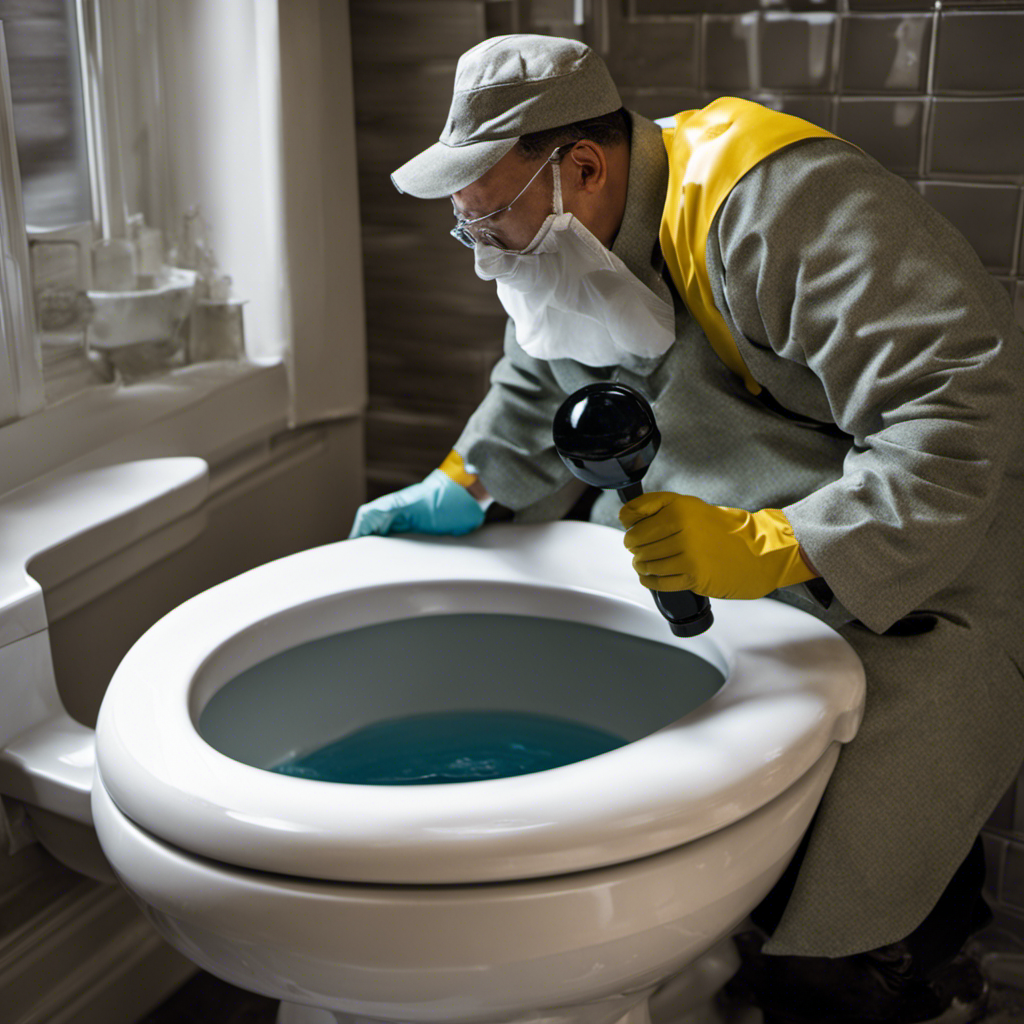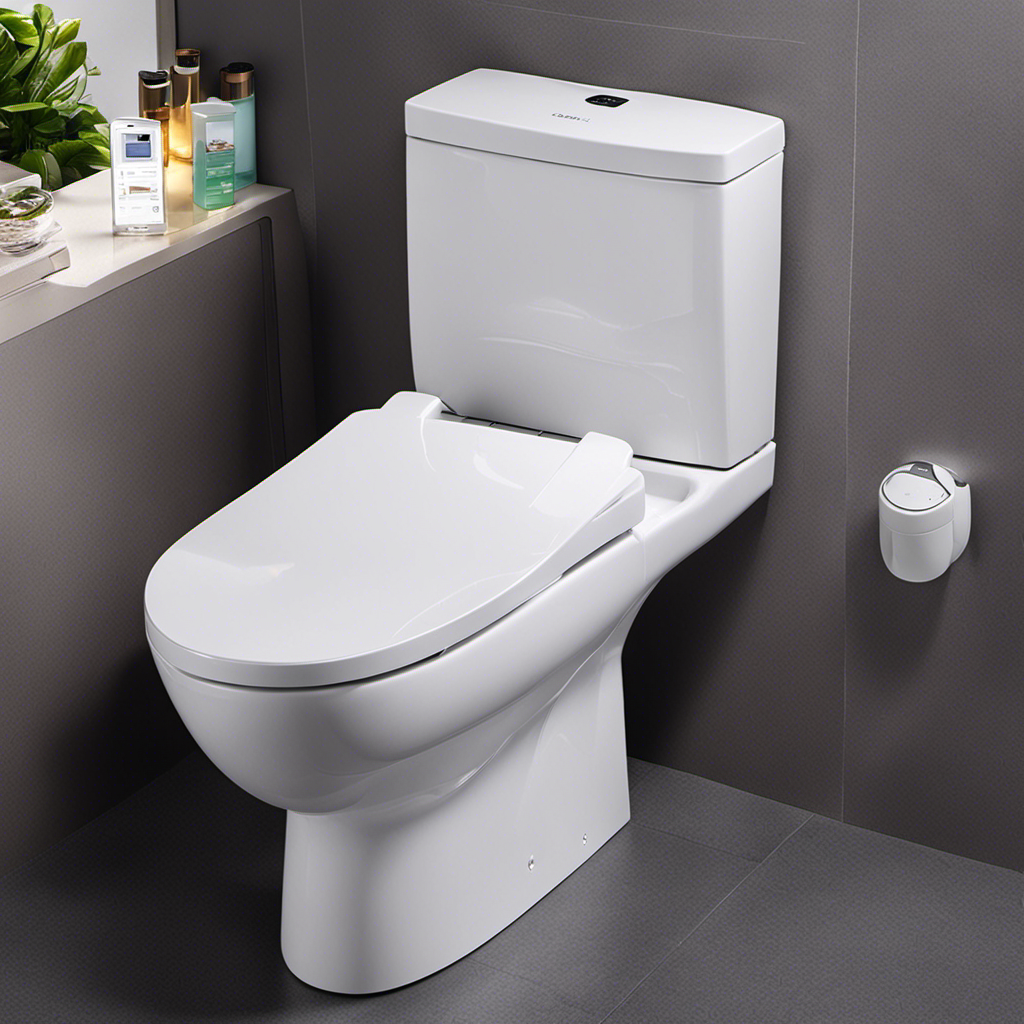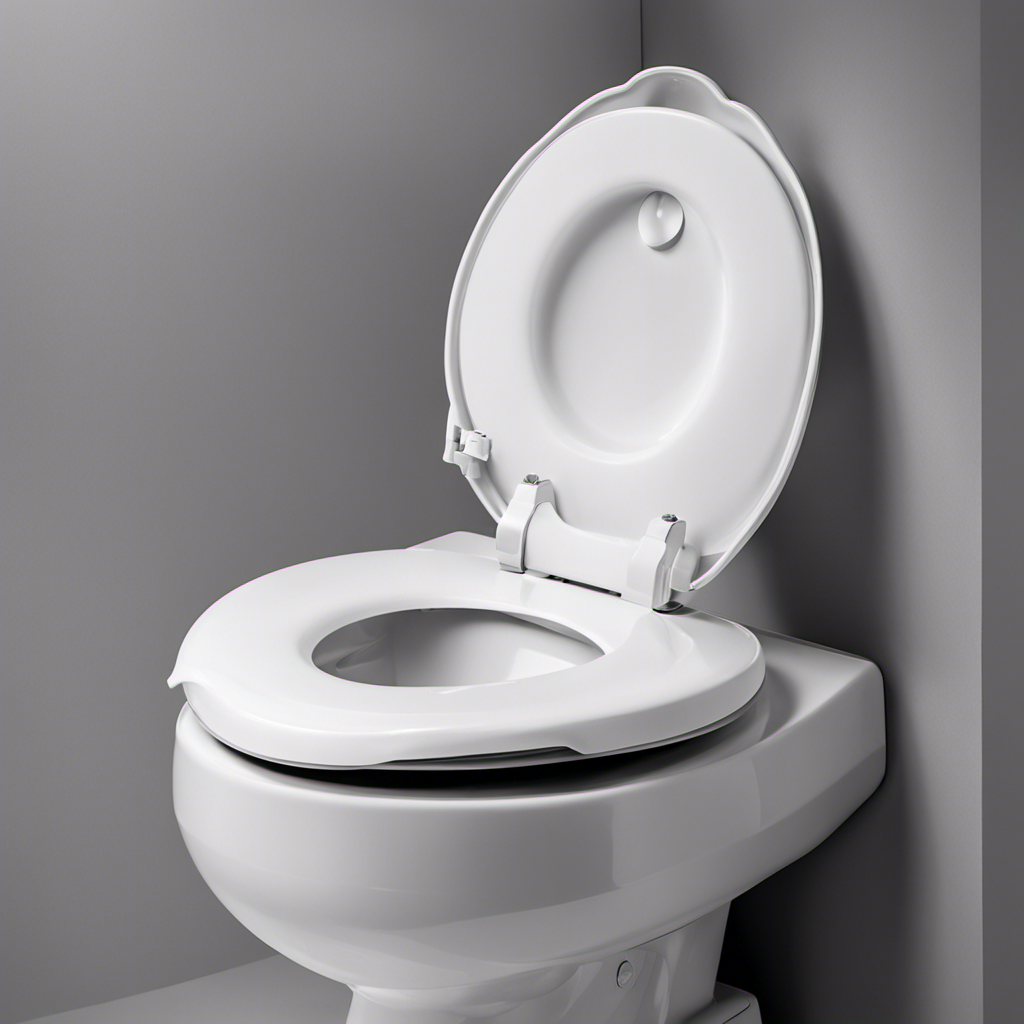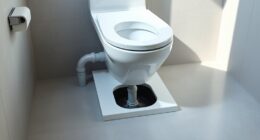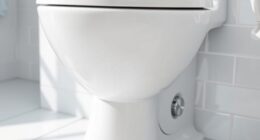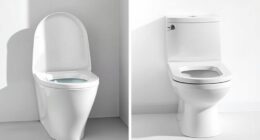I’ve been there, standing in front of a clogged toilet, feeling frustrated and unsure of what to do next. But fear not, because I’m here to guide you through the process of unclogging a toilet step-by-step.
With just a few tools and a little know-how, you’ll be able to tackle this common household problem in no time.
So, roll up your sleeves and let’s get started on getting that toilet back to its flushing glory.
Key Takeaways
- Too much toilet paper is a common cause of clogs, so be mindful of the amount used.
- Use a toilet plunger with a flange to create a better seal and apply gentle but firm force when plunging.
- If the plunger doesn’t work, try using a toilet auger by turning the handle clockwise to break up the clog.
- Prevent toilet clogs by avoiding flushing large amounts of toilet paper or feminine hygiene products, using smaller amounts of toilet paper and flushing multiple times if necessary, and regularly cleaning and maintaining the toilet.
Common Causes of Toilet Clogs
One of the most common causes of toilet clogs is too much toilet paper. It’s important to be mindful of how much toilet paper we use to prevent clogs from occurring.
To avoid this issue, I recommend using a reasonable amount of toilet paper with each use.
If you notice the water is not draining properly, there are a few toilet clog removal techniques you can try.
First, use a plunger to create suction and dislodge the clog. Make sure to cover the entire drain hole and push and pull vigorously.
If that doesn’t work, you can try using a toilet auger. Insert it into the drain and twist it to break up the clog. Remember to always wear gloves and follow the manufacturer’s instructions.
Tools and Materials You’ll Need
To get started, you’ll need a plunger and a bucket.
Here’s what you’ll need to unclog a toilet:
-
Toilet plunger: Choose a plunger with a flange, as it creates a better seal. Make sure the plunger is clean before using it.
-
Bucket: This will come in handy to collect any excess water that may overflow during the unclogging process.
-
Drain snake: If the plunger doesn’t do the trick, a drain snake can be used to dislodge stubborn clogs. Insert the flexible wire into the toilet drain and rotate it to break up the blockage.
Now that you have the necessary tools, you’re ready to tackle the clog. Remember to apply force gently but firmly when using the plunger or drain snake.
With a bit of patience and the right tools, you should be able to clear the clog and get your toilet back to normal.
Step-by-Step Guide to Unclogging a Toilet
Now that you have the necessary tools, you’re ready to tackle the clog and get your bathroom back in working order. Let’s dive right into the step-by-step guide to unclogging a toilet.
First, start by using a plunger. Make sure there is enough water in the bowl to cover the plunger’s rubber cup. Place the plunger over the drain hole and give it a firm push and pull motion. Repeat this a few times until the water starts draining.
If the plunger doesn’t work, try using a toilet auger. Insert the auger into the drain hole and turn the handle clockwise. This will help break up the clog and allow the water to flow freely.
To prevent future toilet clogs, there are a few techniques you can implement. First, avoid flushing large amounts of toilet paper or feminine hygiene products. These can easily cause a clog.
Second, consider adding a mesh screen to the drain hole to catch any debris that may cause a clog.
Finally, regular maintenance by using a toilet bowl cleaner and occasionally flushing hot water down the drain can help prevent build-up.
Tips and Tricks for Preventing Toilet Clogs
If you want to prevent toilet clogs, remember to avoid flushing large amounts of toilet paper or feminine hygiene products. These can easily create blockages in your plumbing system.
Here are some tips and tricks you can follow to keep your toilet running smoothly:
-
Use smaller amounts of toilet paper: Instead of using a large wad of toilet paper, try using smaller amounts and flushing multiple times if necessary.
-
Regular maintenance: It’s important to regularly clean and maintain your toilet. This includes checking for any leaks or cracks, as well as keeping the flushing mechanism in good working condition.
-
Consider using a plunger: A plunger is an effective tool for unclogging toilets. Make sure you have one on hand in case of emergencies.
When to Call a Professional Plumbe
If you’re experiencing persistent plumbing issues, it may be time to call a professional plumber. Signs of a serious plumbing issue include recurring clogs, slow drainage, low water pressure, and leaky pipes. Ignoring these signs can lead to more extensive and costly repairs down the line.
When choosing a reliable plumber, there are a few key factors to consider. First, make sure they are licensed and insured. This ensures that they have the necessary training and expertise to handle your plumbing needs. Additionally, check for customer reviews and testimonials to get an idea of their reputation and quality of work.
Frequently Asked Questions
How Do I Know if My Toilet Is Clogged?
If your toilet is clogged, there are a few signs to look out for. Water rising to the rim or not draining properly are common indicators. To unclog it, you can try using a plunger or a toilet auger.
Can I Use Chemical Drain Cleaners to Unclog My Toilet?
Can I use chemical drain cleaners to unclog my toilet? It’s tempting, but I wouldn’t recommend it. There are alternative methods for unclogging toilets without using chemicals that are safer and more effective.
What Should I Do if Plunging Doesn’t Work?
If plunging doesn’t work, there are alternative solutions to unclog a toilet. One option is to use a toilet auger or a drain snake. If all else fails, it might be time to call a professional.
Are There Any Natural Remedies I Can Try Before Calling a Professional Plumber?
Before calling a professional plumber, I always try natural remedies and DIY solutions. There are plenty of effective options like using baking soda and vinegar or a toilet auger to unclog a toilet.
Can a Clogged Toilet Cause Damage to My Plumbing System?
Yes, a clogged toilet can cause damage to the plumbing system if left untreated. It’s important to address the issue promptly. Toilet clogs are common and can be prevented by proper use and regular maintenance.
Conclusion
In conclusion, unclogging a toilet is a simple task that anyone can do with the right tools and knowledge. By following the step-by-step guide provided, you can easily clear any clog and get your toilet back to working order.
Remember to take preventative measures to avoid future clogs, such as avoiding flushing non-flushable items and regularly cleaning your toilet.
If all else fails, don’t hesitate to call a professional plumber. They’re the experts in handling those stubborn clogs.
So go ahead, tackle that clog and flush away your worries!
